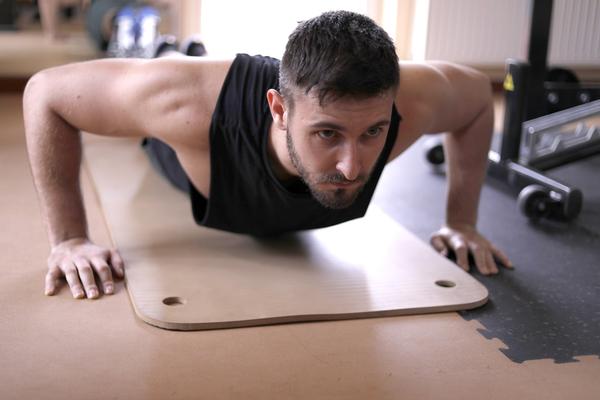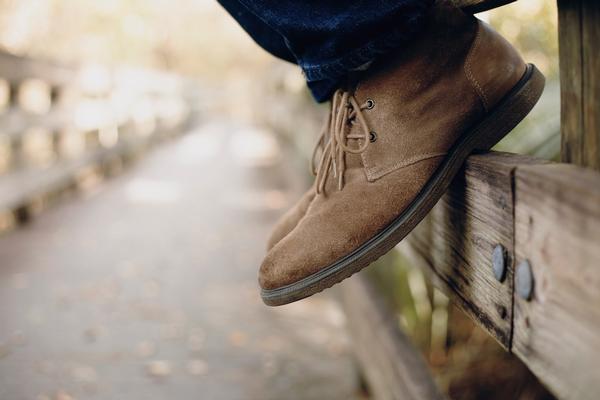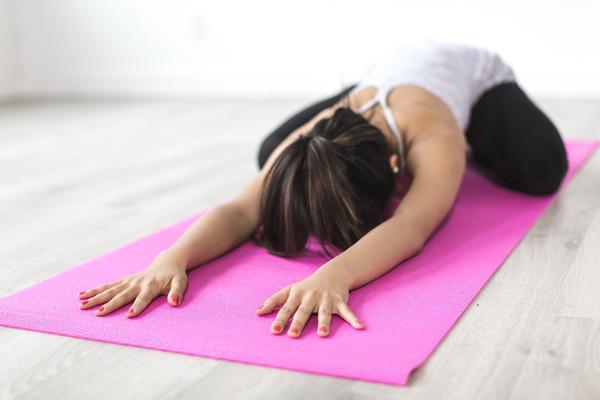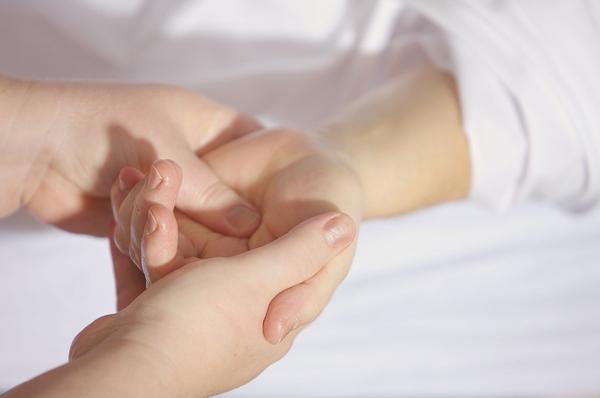Latest News and Information
Wyoming Physical Therapy Pros Debunk 3 Common Fitness Myths
October 23, 2020
When it comes to staying healthy, you know that getting fit is one of the best things you can do. Unfortunately, many newer athletes looking to improve their health and regain their mobility end up falling for some potentially harmful fitness myths that can leave them searching the internet for “physical therapy near me.†As long as you understand why those myths are wrong, you’ll be able to avoid making those common mistakes. Here’s what you need to understand to make wise fitness decisions that are beneficial for your body and your overall health.Â
1. No Pain, No Gain
This motto has been used by bodybuilders, fitness buffs, and professional athletes for decades. Unfortunately, it leaves many people, even experienced fitness enthusiasts, suffering in the long run. The truth is that you don’t have to push yourself to the point of exhaustion or physical pain in order to improve your health. In fact, doing so can lead to serious and debilitating injuries that require months of physical therapy to recover from. It’s okay to take things slowly and build up over time. Instead of pushing yourself so hard that it hurts, back off. Push yourself so that you’re working hard, but not so much so that you’re struggling to perform the exercises.
2. You Need to Go to a Gym
Yes, gyms are great places to get a serious workout in, but they’re incredibly expensive. This makes fitness seem inaccessible to people without tons of money to spare. Luckily, they’re not the only option. You can exercise anywhere that you have the space. This could be your bedroom, living room, backyard, or a neighborhood park. If you don’t have access to weights, use your bodyweight to strengthen and tone your muscles. If you can’t use a treadmill or elliptical, walk or jog around the block to get your cardio in. The most important thing to do is get your heartrate up.Â
3. You Can Target Fat Loss
One of the most common reasons people start working out is to lose weight. Unfortunately, many of them are under the assumption that they can target their fat loss by exercising specific parts of their body. If this was true, everyone would have six-pack abs and perfectly toned thighs. The only way to get rid of fat in the areas that you’re most concerned about is to work out your entire body. This means doing more than just crunches or hitting the treadmill. You need to strengthen each muscle group, get good cardio workouts in, and focus on your overall fitness if you want to see lasting, long-term results.
Keep These Myths in Mind
If you’re starting out on your fitness journey, make sure to keep these common myths in mind. When you avoid making these mistakes as you get started, you’ll be less likely to hurt yourself or have to seek the help of an experienced physical therapist. However, if you are injured or feel that your exercise routine has pushed your body past the point of pain, reach out and schedule a consultation.Â
Read More...
1. No Pain, No Gain
This motto has been used by bodybuilders, fitness buffs, and professional athletes for decades. Unfortunately, it leaves many people, even experienced fitness enthusiasts, suffering in the long run. The truth is that you don’t have to push yourself to the point of exhaustion or physical pain in order to improve your health. In fact, doing so can lead to serious and debilitating injuries that require months of physical therapy to recover from. It’s okay to take things slowly and build up over time. Instead of pushing yourself so hard that it hurts, back off. Push yourself so that you’re working hard, but not so much so that you’re struggling to perform the exercises.
2. You Need to Go to a Gym
Yes, gyms are great places to get a serious workout in, but they’re incredibly expensive. This makes fitness seem inaccessible to people without tons of money to spare. Luckily, they’re not the only option. You can exercise anywhere that you have the space. This could be your bedroom, living room, backyard, or a neighborhood park. If you don’t have access to weights, use your bodyweight to strengthen and tone your muscles. If you can’t use a treadmill or elliptical, walk or jog around the block to get your cardio in. The most important thing to do is get your heartrate up.Â
3. You Can Target Fat Loss
One of the most common reasons people start working out is to lose weight. Unfortunately, many of them are under the assumption that they can target their fat loss by exercising specific parts of their body. If this was true, everyone would have six-pack abs and perfectly toned thighs. The only way to get rid of fat in the areas that you’re most concerned about is to work out your entire body. This means doing more than just crunches or hitting the treadmill. You need to strengthen each muscle group, get good cardio workouts in, and focus on your overall fitness if you want to see lasting, long-term results.
Keep These Myths in Mind
If you’re starting out on your fitness journey, make sure to keep these common myths in mind. When you avoid making these mistakes as you get started, you’ll be less likely to hurt yourself or have to seek the help of an experienced physical therapist. However, if you are injured or feel that your exercise routine has pushed your body past the point of pain, reach out and schedule a consultation.Â
How to Choose Shoes for Work to Reduce Your Need to Search the Internet for “Physical Therapy Near Meâ€
October 19, 2020
When you work on your feet all day, you know that the right pair of shoes can make all the difference in how your body feels at the end of the day. After completing a course of physical therapy to rebuild strength and help alleviate those aches and low back pain caused by work, you need to upgrade your footwear to keep the pain from coming back. If you’re not sure what to look for, you’re not alone. Luckily, it’s easier than you might think. Here are a few key features to look for when choosing the best and most supportive shoes for your shifts.
Choose the Right Type of Sole
Before you start shopping for shoes, think about the types of surfaces and environments you’ll be working in. If you work outside and need grip on natural terrain, look for soles with deep tread that will help you maintain your footing at all times. If you work on polished floors indoors and regularly deal with spills, a non-slip sole will be a better choice. The right sole can make all the difference in reducing your risk of future slip-and-fall injuries. This can help you stay out of pain and reduces your chances of needing physical therapy in the future.
Pay Attention to Your Arch Support
One of the biggest causes of ongoing pain in the low back, hips, knees, and even ankles is due to inadequate arch support. Your foot needs to be properly cradled in the shoe to keep your muscles and bones in the right alignment. If you choose a shoe that doesn’t have the right type of arch support, you’ll put unnecessary strain on the rest of your body. When you start trying on different pairs, pay attention to the amount of support each shoe provides. If it’s good, but not ideal, you can always add insoles to improve support.
Consider Toe Protection
It’s normal to drop items throughout the day. When those items are light, they fall without hurting you even if they land directly on your foot and toes. However, if they’re heavy, those dropped items can lead to broken toes and bones in your foot. Though these can heal, you’ll likely need extensive physical therapy to regain your full mobility. Choosing shoes with steel toes and crush-resistant support can help protect your feet from those injuries.Â
Pick Comfort Over Style Every Time
No matter what type of shoe you’re considering, never compromise comfort for style. It’s far better to choose an ugly shoe that feels great on your feet than it is to choose a stylish option that leaves you hurting after a few minutes. Pay attention to the way each shoe feels and go with the ones that feel best.
Choose the Right Shoes and Spare Yourself Future Pain
The right pair of shoes can help you avoid pain and reduce the severity of repetitive use injuries. Keep these tips in mind and you’ll be able to pick the right shoe every single time. If the shoes aren’t enough and you’re still dealing with pain, don’t wait. Make an appointment with a physical therapist now.
Â
Read More...
Choose the Right Type of Sole
Before you start shopping for shoes, think about the types of surfaces and environments you’ll be working in. If you work outside and need grip on natural terrain, look for soles with deep tread that will help you maintain your footing at all times. If you work on polished floors indoors and regularly deal with spills, a non-slip sole will be a better choice. The right sole can make all the difference in reducing your risk of future slip-and-fall injuries. This can help you stay out of pain and reduces your chances of needing physical therapy in the future.
Pay Attention to Your Arch Support
One of the biggest causes of ongoing pain in the low back, hips, knees, and even ankles is due to inadequate arch support. Your foot needs to be properly cradled in the shoe to keep your muscles and bones in the right alignment. If you choose a shoe that doesn’t have the right type of arch support, you’ll put unnecessary strain on the rest of your body. When you start trying on different pairs, pay attention to the amount of support each shoe provides. If it’s good, but not ideal, you can always add insoles to improve support.
Consider Toe Protection
It’s normal to drop items throughout the day. When those items are light, they fall without hurting you even if they land directly on your foot and toes. However, if they’re heavy, those dropped items can lead to broken toes and bones in your foot. Though these can heal, you’ll likely need extensive physical therapy to regain your full mobility. Choosing shoes with steel toes and crush-resistant support can help protect your feet from those injuries.Â
Pick Comfort Over Style Every Time
No matter what type of shoe you’re considering, never compromise comfort for style. It’s far better to choose an ugly shoe that feels great on your feet than it is to choose a stylish option that leaves you hurting after a few minutes. Pay attention to the way each shoe feels and go with the ones that feel best.
Choose the Right Shoes and Spare Yourself Future Pain
The right pair of shoes can help you avoid pain and reduce the severity of repetitive use injuries. Keep these tips in mind and you’ll be able to pick the right shoe every single time. If the shoes aren’t enough and you’re still dealing with pain, don’t wait. Make an appointment with a physical therapist now.
Â
Surprising Health Benefits of Stretching for Reducing Lower Back Pain
October 14, 2020
For most adults, experiencing pain in the lower back is bound to happen. Work, hobbies, and even normal activities put strain on the area and increase the likelihood that you’ll be in pain at some point in your life. Luckily, there are things you can do to get rid of that low back pain and reduce the risk of it coming back frequently. You just need to be willing to put in a little time and effort. Stretching is the easiest way to help keep you out of pain, but there are a number of other benefits that this simple type of exercise can give you.
Improves Your Posture
Your muscles are elastic. This means they stretch out and contract as needed to keep your body in the right position. However, with bad posture habits, it’s normal for muscles to get tight and stay in one single restricted range of movement. Once this happens, maintaining good posture is almost impossible. It might even hurt. Stretching helps reduce tension in your muscles by allowing them to lengthen back out. This, in turn, makes it easier for you to retain your body’s natural posture easily.
Enhances Your Range of Motion
As we mentioned above, your range of motion becomes limited when your muscles are tight. This makes it harder for you to move around and perform tasks that used to be easy when you were younger. When you stretch, you’ll slowly improve your range of motion which takes the strain off of your lower back muscles. Over time, you’ll find it easier to move and will stay less stiff, putting less strain on your back. All that translates to one thing: less pain in the long-run.
Boosts Blood Flow to Problem Areas
Good blood flow is key in helping your muscles recover and stay limber. However, if you’re constantly restricting their movement because they’re already stiff, you’ll cut down on the amount of blood flow your muscles receive. This makes healing take longer and increases the amount of pain you feel on a regular basis. By stretching even a little bit, you’ll improve your blood flow and thereby improve your muscles’ health.Â
Reduces Stress
Think about what makes your muscles tight so often. If you’re like most people, it’s stress. The more you can de-stress and relax, the easier it will be to prevent that annoying low back pain. Stretching for a few minutes each day can help you unwind and improve your stress response over time. You don’t have to commit to a full half-hour session every day. Just a little in the morning and anytime you’re feeling stiff will be enough to help you relax.
Start Stretching Today
Stretching is one of the best things you can do for your muscles, especially as you progress in your recovery from even moderate injuries. Just make sure you’re stretching the right way. Schedule an appointment with your trusted Wyoming physical therapist and let us show you the best stretches for your body’s needs. Over time, we’ll work to improve your mobility, range of motion, and reduce your pain symptoms as much as we can.
Read More...
Improves Your Posture
Your muscles are elastic. This means they stretch out and contract as needed to keep your body in the right position. However, with bad posture habits, it’s normal for muscles to get tight and stay in one single restricted range of movement. Once this happens, maintaining good posture is almost impossible. It might even hurt. Stretching helps reduce tension in your muscles by allowing them to lengthen back out. This, in turn, makes it easier for you to retain your body’s natural posture easily.
Enhances Your Range of Motion
As we mentioned above, your range of motion becomes limited when your muscles are tight. This makes it harder for you to move around and perform tasks that used to be easy when you were younger. When you stretch, you’ll slowly improve your range of motion which takes the strain off of your lower back muscles. Over time, you’ll find it easier to move and will stay less stiff, putting less strain on your back. All that translates to one thing: less pain in the long-run.
Boosts Blood Flow to Problem Areas
Good blood flow is key in helping your muscles recover and stay limber. However, if you’re constantly restricting their movement because they’re already stiff, you’ll cut down on the amount of blood flow your muscles receive. This makes healing take longer and increases the amount of pain you feel on a regular basis. By stretching even a little bit, you’ll improve your blood flow and thereby improve your muscles’ health.Â
Reduces Stress
Think about what makes your muscles tight so often. If you’re like most people, it’s stress. The more you can de-stress and relax, the easier it will be to prevent that annoying low back pain. Stretching for a few minutes each day can help you unwind and improve your stress response over time. You don’t have to commit to a full half-hour session every day. Just a little in the morning and anytime you’re feeling stiff will be enough to help you relax.
Start Stretching Today
Stretching is one of the best things you can do for your muscles, especially as you progress in your recovery from even moderate injuries. Just make sure you’re stretching the right way. Schedule an appointment with your trusted Wyoming physical therapist and let us show you the best stretches for your body’s needs. Over time, we’ll work to improve your mobility, range of motion, and reduce your pain symptoms as much as we can.
Signs You Might Have Carpal Tunnel and What to Do About It
October 2, 2020
Carpal tunnel is one of the most common repetitive use conditions people face these days. However, just because it’s common doesn’t mean that you’ll be able to recognize the signs and symptoms if you develop them. You need to know exactly what to look for so you can seek the appropriate medical treatment and physical therapy services for your needs. Here are a few of the key signs and symptoms you should watch for.
Sharp Pains Along Your Wrist
Carpal tunnel syndrome impacts the way your hands and wrists can move and react in different tasks and situations. Think about the way your forearms, wrists, and hands feel when you’re typing, writing, or even washing dishes. If you feel sharp pains consistently anytime you attempt one of these tasks, you likely have carpal tunnel.
Pain When You’re Sleeping
When you’re asleep, your body moves and shifts to help alleviate strain on your muscles and help you achieve a good night’s rest. However, when you have carpal tunnel, you’ll often find that good, uninterrupted sleep is hard to come by. Your hands and wrists may start to experience pain anytime you move against the mattress or under the covers. These actions can put strain on your arms and may trigger enough of a pain response to wake you up. If this happens frequently, it’s time to speak with a doctor.
You Can’t Tell If Something Is Hot or Cold
Though carpal tunnel is most commonly associated with wrist pain, it can also mess with the way your nerves respond to different conditions. Pay attention to the way certain items feel in your hand. If you pick up a glass of ice water and it doesn’t feel cold or grab a cup of coffee and can’t tell if it’s hot or cold, you may want to speak with your doctor. Though this could be caused by other neurological conditions, it’s also a tell-tale sign of carpal tunnel.Â
What You Can Do If You Have Carpal Tunnel
Getting diagnosed with carpal tunnel can feel like a major blow. After all, it seems like you’re never going to be able to get back to normal and have the full range of motion you’ve had before. Luckily, recovery is possible, but you’ll need to speak with your doctor to discuss your options. Some people respond well with simple physical therapy sessions while others with more severe cases may need surgery before going through physical therapy to see the results they want. Whatever the case is, know that it is possible to get your body back to normal. It just takes time.
Reach Out Now
If you’ve been diagnosed with carpal tunnel, don’t just accept the pain. Contact your doctor as soon as you can and let them assess your condition. If they recommend that you start going to physical therapy, make an appointment with your nearest location and start learning how to regain strength and mobility in your wrists and hands as quickly as you can.Â
Read More...
Sharp Pains Along Your Wrist
Carpal tunnel syndrome impacts the way your hands and wrists can move and react in different tasks and situations. Think about the way your forearms, wrists, and hands feel when you’re typing, writing, or even washing dishes. If you feel sharp pains consistently anytime you attempt one of these tasks, you likely have carpal tunnel.
Pain When You’re Sleeping
When you’re asleep, your body moves and shifts to help alleviate strain on your muscles and help you achieve a good night’s rest. However, when you have carpal tunnel, you’ll often find that good, uninterrupted sleep is hard to come by. Your hands and wrists may start to experience pain anytime you move against the mattress or under the covers. These actions can put strain on your arms and may trigger enough of a pain response to wake you up. If this happens frequently, it’s time to speak with a doctor.
You Can’t Tell If Something Is Hot or Cold
Though carpal tunnel is most commonly associated with wrist pain, it can also mess with the way your nerves respond to different conditions. Pay attention to the way certain items feel in your hand. If you pick up a glass of ice water and it doesn’t feel cold or grab a cup of coffee and can’t tell if it’s hot or cold, you may want to speak with your doctor. Though this could be caused by other neurological conditions, it’s also a tell-tale sign of carpal tunnel.Â
What You Can Do If You Have Carpal Tunnel
Getting diagnosed with carpal tunnel can feel like a major blow. After all, it seems like you’re never going to be able to get back to normal and have the full range of motion you’ve had before. Luckily, recovery is possible, but you’ll need to speak with your doctor to discuss your options. Some people respond well with simple physical therapy sessions while others with more severe cases may need surgery before going through physical therapy to see the results they want. Whatever the case is, know that it is possible to get your body back to normal. It just takes time.
Reach Out Now
If you’ve been diagnosed with carpal tunnel, don’t just accept the pain. Contact your doctor as soon as you can and let them assess your condition. If they recommend that you start going to physical therapy, make an appointment with your nearest location and start learning how to regain strength and mobility in your wrists and hands as quickly as you can.Â
Wyoming Physical Therapy Experts Explain Common Injuries Teachers Face and How to Avoid Them
September 23, 2020
Teachers are notoriously hard workers. They spend most of their days corralling kids, helping them learn, making sure they’re safe, and putting their health on the line every day they go into work. Though germs are the most common hazard teachers face, repetitive-use injuries happen all too often. Worse, they can happen to anyone of any age, even if you’re in otherwise excellent health. Though physical therapy services can help you recover more quickly, it’s always best if you can avoid the injuries in the first place. Here are a few key problems to watch for.
Carpal Tunnel
When you spend hours each day writing, typing, and working with your hands, carpal tunnel is always a possibility. While minor cases can resolve themselves with enough rest, more severe instances require surgery and intense physical therapy. If you start to feel like you’re developing carpal tunnel, take a moment to see how you’re holding your pen or typing at your computer. If you’re straining your wrists and muscles, take a step back and stretch. Then, do what you can to keep your wrists in a neutral position. If you spend hours at the computer, consider investing in a wrist rest or an ergonomic keyboard and mouse setup to reduce the strain your wrists will be under throughout the day.
Low Back Pain
Standing is believed to be healthier than sitting for extended periods and, in most cases, it is. However, that doesn’t mean standing all day long doesn’t have its own health risks. The most common problem teachers end up facing is chronic low back pain. When you’re standing for hours on end, it’s normal to feel a little ache in your back, but when it starts lasting for days, pay attention to how you’re standing. Bend your knees slightly to take the strain off of your back. Try to walk around every few minutes while you’re teaching to keep your back loose. You may also want to invest in different shoes with proper orthotic supports to further reduce the strain on your back.
Knee Pain
Knee pain is almost as common as low back pain and potentially more problematic. It interferes with your ability to move around and be as active as your students need you to be. Unfortunately, knee pain has many causes but the most common one seems to be frequent bending, kneeling, or squatting. If you’re dealing with knee pain, the best thing you can do is work with a physical therapist to help strengthen your muscles to support those movements naturally.Â
Get Help Quickly
As a teacher, you want to be there for your students. You can be as long as you don’t neglect your health. The best thing you can do is work with an experienced physical therapist. They’ll identify the types of movements that are causing your pain and show you ways to avoid making those same movements in ways that leave you hurting at the end of the day. Contact your closest location to schedule a consultation.
Read More...
Carpal Tunnel
When you spend hours each day writing, typing, and working with your hands, carpal tunnel is always a possibility. While minor cases can resolve themselves with enough rest, more severe instances require surgery and intense physical therapy. If you start to feel like you’re developing carpal tunnel, take a moment to see how you’re holding your pen or typing at your computer. If you’re straining your wrists and muscles, take a step back and stretch. Then, do what you can to keep your wrists in a neutral position. If you spend hours at the computer, consider investing in a wrist rest or an ergonomic keyboard and mouse setup to reduce the strain your wrists will be under throughout the day.
Low Back Pain
Standing is believed to be healthier than sitting for extended periods and, in most cases, it is. However, that doesn’t mean standing all day long doesn’t have its own health risks. The most common problem teachers end up facing is chronic low back pain. When you’re standing for hours on end, it’s normal to feel a little ache in your back, but when it starts lasting for days, pay attention to how you’re standing. Bend your knees slightly to take the strain off of your back. Try to walk around every few minutes while you’re teaching to keep your back loose. You may also want to invest in different shoes with proper orthotic supports to further reduce the strain on your back.
Knee Pain
Knee pain is almost as common as low back pain and potentially more problematic. It interferes with your ability to move around and be as active as your students need you to be. Unfortunately, knee pain has many causes but the most common one seems to be frequent bending, kneeling, or squatting. If you’re dealing with knee pain, the best thing you can do is work with a physical therapist to help strengthen your muscles to support those movements naturally.Â
Get Help Quickly
As a teacher, you want to be there for your students. You can be as long as you don’t neglect your health. The best thing you can do is work with an experienced physical therapist. They’ll identify the types of movements that are causing your pain and show you ways to avoid making those same movements in ways that leave you hurting at the end of the day. Contact your closest location to schedule a consultation.




